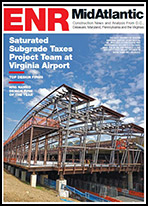Design firms across the mountain states are reportedly suffering the same malaise: financially stalled projects, a sluggish economic recovery and too much competition for shrinking public-sector work.


An AIA Architecture Billings Index national survey of April business activity confirms at least part of the story, with 63% of firms surveyed reporting they have at least one project stalled from a lack of financing and that the average value of those projects is almost $50 million per firm.
The survey's major findings also included:
The availability of construction project financing remains a major issue for many architecture firms. In April, 57% of survey respondents rated the issue as very or extremely serious, and an additional 30% indicated it was a somewhat serious issue.
Nearly half of respondents (45%) said that the availability of credit has become more restrictive over the past year, with just 16% seeing an easing of credit availability.
“This data only serves to reinforce the dire need for lawmakers to act to alleviate a credit crunch that continues to plague one of the economy's biggest job creating engines—the design and construction industry,” says AIA President Clark Manus.
Revenues Flat or Down
Bottom-line numbers tell the rest of the story. Regional design firm revenue for 2010 reported as part of this year's rankings shows, with few exceptions, declines from 2009 totals and a 30% to 50% reduction from 2007 pre-recession figures. Most firms have already tightened their belts and are now concerned they may be witnessing a “new normal” for the industry.
“Our biggest concern is the slow pace of the economic recovery and its profound effect on our profession as a whole,” says Ken Field, a principal and president of RB+B Architects Inc., Fort Collins, Colo. “We are seeing very talented architectural graduates as well as seasoned professionals without jobs, and many are being forced to leave the profession.”
Designers complain that owners have driven prices and fees to bare-bones levels, expecting keen competition for every project. “Architecture is increasingly becoming a commodity, with selection driven by the lowest initial fee,” says Stuart L. Coppedge, an associate principal with RTA Architects, Colorado Springs. “Without significant changes in how we practice, at some point low fees will reduce the level of service architects are able to provide their clients.”


